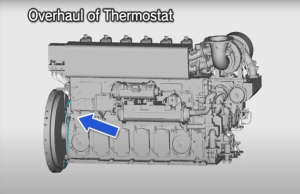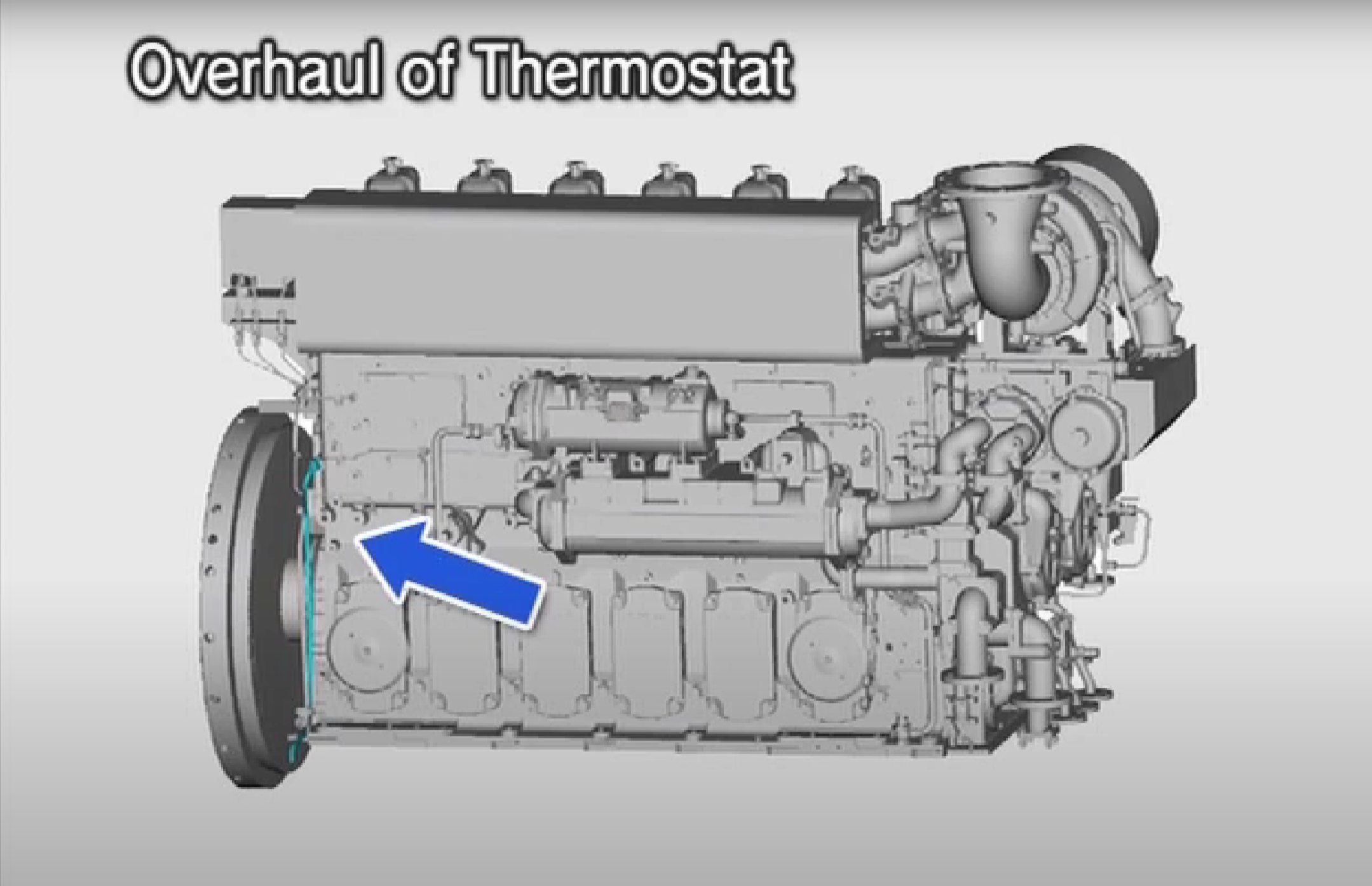Learn how to properly maintain the cooling water system of marine diesel engine generators. This step-by-step guide covers thermostatic valve overhaul, inspections, and best practices to prevent overheating and improve efficiency.
Why Cooling Water System Maintenance Matters in Marine Diesel Engines
The cooling water system in a marine diesel engine is as essential as lubrication or fuel. It regulates engine temperature, prevents overheating, and ensures that parts operate within their safe thermal range. Among the critical components of this system is the thermostatic valve for the cylinder jacket cooling water. If this part fails, the engine can run too hot or too cold—both of which damage components and reduce efficiency.
In this detailed guide, based on a hands-on educational video, we explore not just the inspection and overhaul of thermostatic valves but also broader best practices for maintaining the engine cooling system aboard ships.
Understanding the Cooling Water System in Marine Engines
The cooling system usually, not always, includes:
- Cylinder jacket cooling circuit
- Thermostatic valves
- Freshwater pumps
- Expansion tank
- Sea water cooler (for heat exchange)
The thermostatic valve controls the flow of cooling water to maintain a stable operating temperature (usually 70–90°C). When engine load changes, the valve adjusts the coolant flow to prevent thermal shock or inefficient combustion.

–
Step-by-Step: Cylinder Jacket Thermostatic Valve Maintenance
Recommended Overhaul Interval:
Every 2000–2500 running hours, or as specified by engine maker.
1. Preparation and Draining
- Ensure the engine is shut down and cool.
- Wear PPE (gloves, goggles).
- Close inlet/outlet valves.
- Drain the cooling water using the system’s drain cock or dedicated valve.
2. Disassembly Procedure
- Loosen and remove bolts securing the thermostatic valve housing.
- Carefully detach the valve to avoid damaging flanges or gaskets.
- Note the alignment of internal components for proper reassembly.
3. Inspection Checklist
- Valve body: Check for cracks or corrosion.
- Spring: Inspect for fatigue, rust, or deformation.
- Thermal element: Soak in hot water and observe lift.
Tip: A healthy valve should lift at the designated temperature range (typically between 70–85°C). Measure with calipers and compare to maker specs.
4. Cleaning and Replacement
- Clean all components with non-abrasive solution.
- Replace damaged parts, O-rings, or springs.
- Apply anti-seize compound on bolts for future maintenance.
5. Reassembly and Alignment
- Refit internal parts based on previous alignment marks.
- Tighten bolts gradually in a crisscross pattern.
- Refill coolant and bleed air from the system.
6. Final Check
- Start the engine.
- Monitor cooling water temperature.
- Inspect for leaks or abnormal temperature fluctuations.
Best Practices to Improve System Reliability
- Use demineralized water to prevent scaling inside jackets and heat exchangers.
- Monitor coolant quality regularly for rust particles or oil contamination.
- Follow proper cooling water treatment programs.
- Log operating temperatures after each watch.
Real-World Example: Averting Overheating at Sea
A container ship in the South China Sea experienced engine overheating. Engineers discovered a stuck thermostatic valve due to corrosion and spring failure. The valve hadn’t been overhauled in over 3000 hours.
The incident caused delayed arrival and over USD 40,000 in repair costs. Lesson: stick to the 2000–2500 hour maintenance cycle and test valve lift routinely.
FAQ: Cooling Water System and Thermostat Maintenance
1. How often should the thermostat be checked?
Every 2000–2500 hours or during major overhauls.
2. What are the signs of a faulty thermostat?
Engine overheating, unstable temperature readings, or long warm-up times.
3. Can I test a thermostat without removing it?
No. Lift test requires soaking in hot water and observing movement.
4. Is it safe to reuse old gaskets?
Not recommended. Always use new gaskets to ensure a proper seal.
5. What is the danger of overcooling?
Incomplete combustion, higher fuel consumption, and carbon deposit buildup.
Conclusion
The thermostatic valve in the cylinder jacket cooling system may seem like a small component, but it plays a major role in maintaining your marine diesel engine’s performance and safety. Regular inspection, cleaning, and testing can prevent overheating, reduce emissions, and ensure your engine operates at peak efficiency.
By applying the procedures outlined in this guide—combined with solid record-keeping and best practices—you’ll stay compliant with IMO/STCW standards and avoid costly breakdowns at sea.
References
- MaritimEducation: https://youtu.be/pBd6clTNoJw
- Wärtsilä. (2023). Cooling Water Systems and Thermostat Operation Manual. https://www.wartsila.com
- MAN Energy Solutions. (2024). Diesel Engine Cooling Guide. https://www.man-es.com
- IMO. (2022). STCW Code – Engine Maintenance Standards. https://www.imo.org
- DNV. (2023). Maritime System Diagnostics and Maintenance. https://www.dnv.com
- IACS. (2022). Unified Requirements for Cooling System Components. https://www.iacs.org.uk

